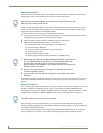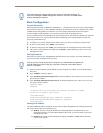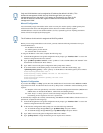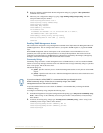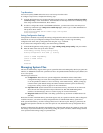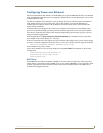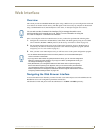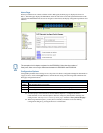
Initial Configuration
17
NXA-ENET24 - Software Management Guide
Configuring Power over Ethernet
The 24-Port Fast Ethernet PoE Switch’s 24 10/100 Mbps ports support the IEEE 802.3af Power-over-Ethernet
(PoE) standard that enables DC power to be supplied to attached devices over the unused pairs of wires in the
connecting Ethernet cable.
Any 802.3af compliant device attached to a port can directly draw power from the switch over the Ethernet
cable without requiring its own separate power source. This capability gives network administrators
centralized power control for devices such as IP phones and wireless access points, which translates into
greater network availability.
A maximum PoE power budget for the switch (power available to all switch ports) can be defined so that
power can be centrally managed, preventing overload conditions at the power source. If the power demand
from devices connected to the switch exceeds the power budget setting, the switch uses port power priority
settings to limit the supplied power.
In the example below, the power mainpower maximum allocation CLI command is used to set the PoE
power budget for the switch. (Range: 37 - 375 watts).
If devices connected to the switch require more power than the switch budget, the port power priority settings
are used to control the supplied power. See the Setting a Switch Power Budget section on page 106 for details.
Console(config)#power mainpower maximum allocation 200
PoE is enabled for all ports by default.
Power can be disabled for a port by using the no form of the power inline CLI command, as shown in the
example below.
Console(config)#interface ethernet 1/2
Console(config-if)#no power inline
Console(config-if)#
DHCP Relay
Since DHCP uses a broadcast mechanism, a DHCP server and its client must physically reside on the same
subnet. Since it is not practical to have a DHCP server on every subnet, DHCP Relay is also supported to allow
dynamic configuration of network interface blades on data network subnets/VLANs from a DHCP server
located in the management network.






